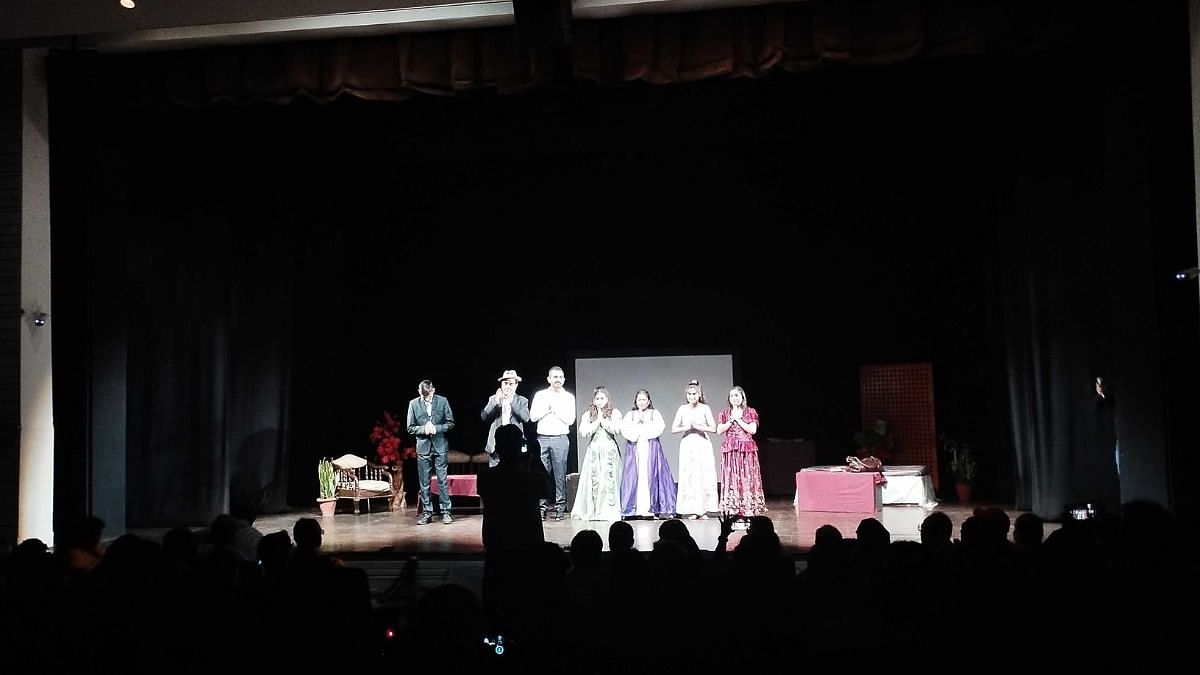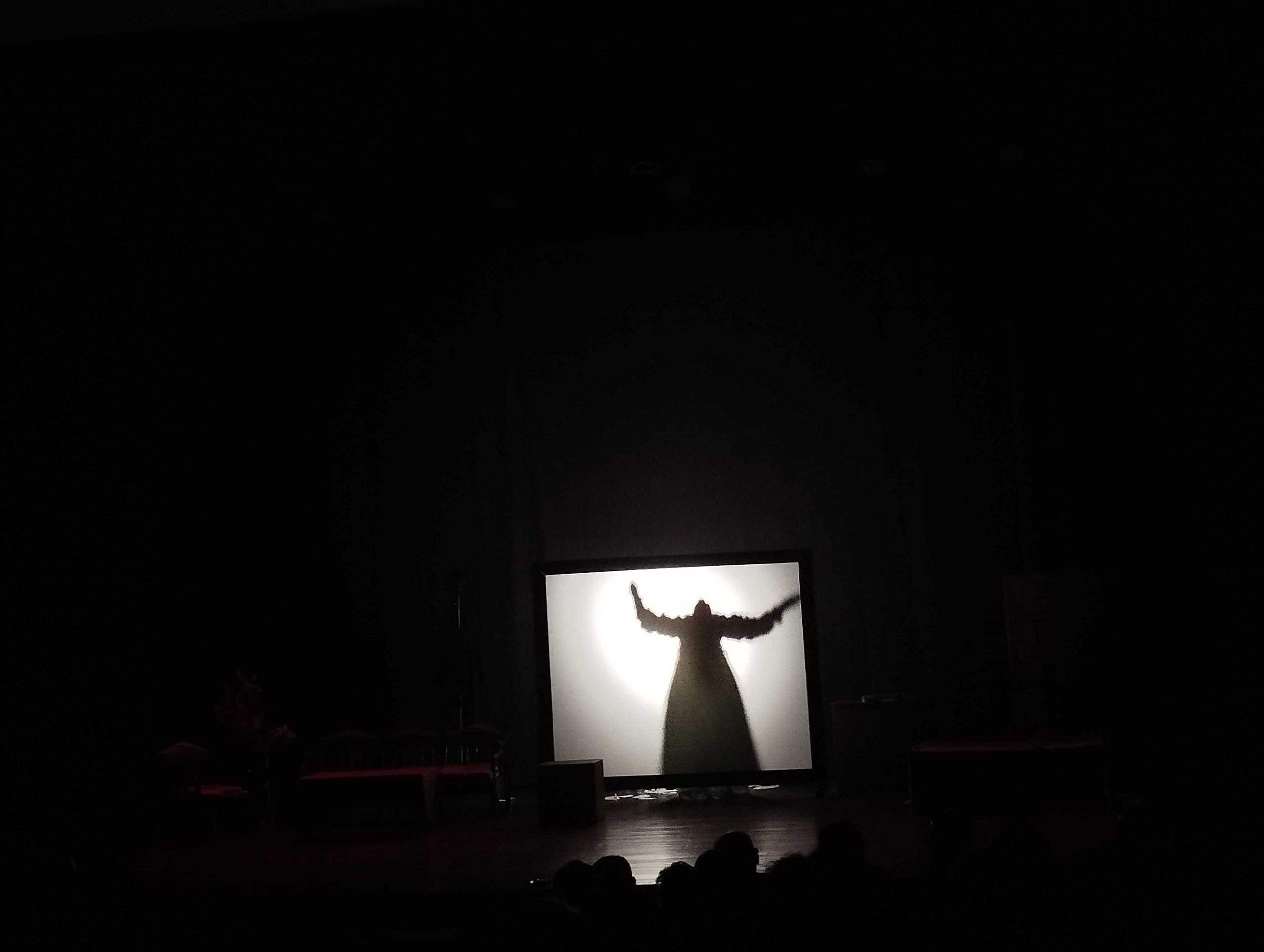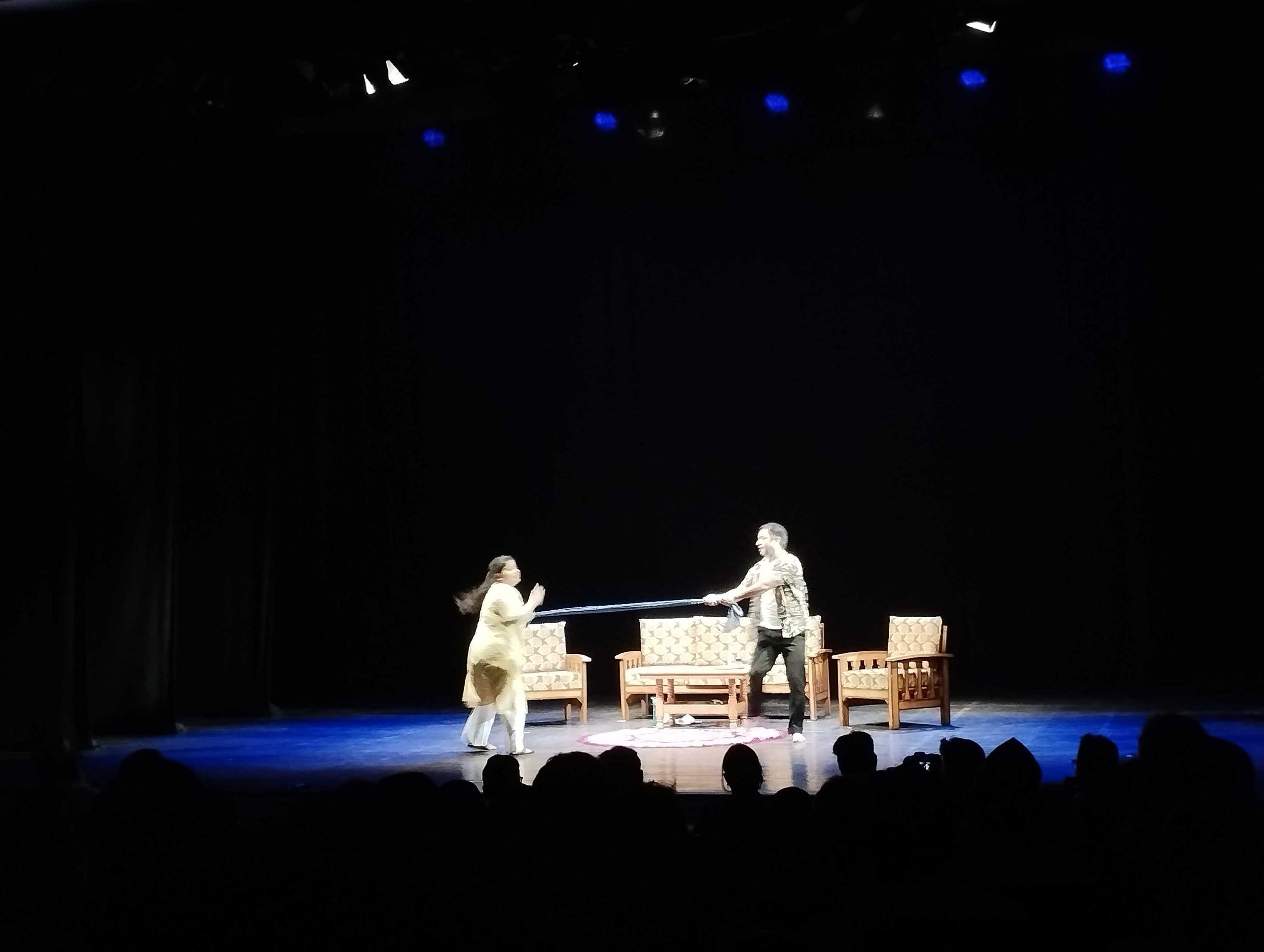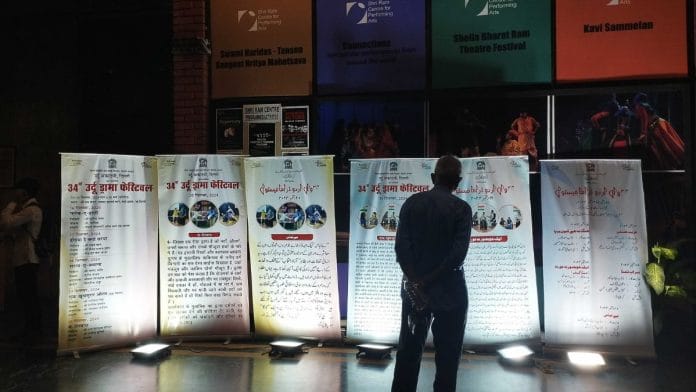New Delhi: The five-day 34th Urdu Drama Festival offered theatre lovers a chance to explore the deep connection between the language and the stage.
“From a performance and acting perspective, Urdu is a scientific language of theatre. It is why the theatre initially adopted it. Later, it transitioned to Hindi and Hindustani,” said Urdu drama writer Mohd Kazim.
His play, Ek Khoobsurat Aurat, an adaptation of Henrik Ibsen’s Hedda Gabler, was performed on 19 September, the fourth day of the festival organised by the Urdu Academy at Sri Ram Centre, Mandi House.
Ek khoobsurat Aurat is a story about a newly married woman. Unable to conform to societal expectations, Hedda manipulates those around her, including her friends and her husband. Her actions ultimately lead to a tragic end.
The festival featured a variety of plays throughout the week, showcasing different genres. Hungama Hai Kyun Barpa, written by Syed Ejaz Hussain and directed by Ahad Khan, humorously captured the wit of Urdu poet Akbar Allahabadi. Saraab-e-Tamanna, directed by Javed Sameer, presented two Anton Chekhov stories, The Seduction and Bank Manager, translated into Urdu by Bilquees Zafeerul Hasan. Another highlight was Fareb-e-Hasti, written by Prof. Sadique and directed by Sunil Rawat, where Mirza Ghalib navigates modern-day Delhi, blending comedy, intrigue, and mystery.

While expanding on his argument that Urdu is the language of theatre, Kazim looked at how the word ‘weh’ (he/she) is pronounced in Hindi.
“All the air is expelled, requiring us to take another breath before saying the next word. On the other hand, when we use the Urdu word ‘Wo’ (He/She), the air is retained, allowing for smoother speech without needing to pause for breath,” he said.
And while the aim of the festival is to promote Urdu, thespians raised concerns about the challenges they face— particularly the gap between the stage and writers. Insufficient funding and the declining state of Urdu plays, and underrepresentation of women among writers and directors were also discussed.
“Urdu theatre is currently in a very dire state, which requires immediate attention,” said a theater director, on the condition of anonymity.

Photo credit: Heena Fatima | ThePrint
Also read: Urdu literature has ignored Dalit Muslims. Pasmandas must own the language
Finding the drama Script
Kazim shed light on the legacy of Urdu theatre and its emergence as the dominant language of the art form, while expressing disappointment over Urdu dramas being presented under the guise of Hindi.
He explained that modern theatre in India began in Urdu in the 19th century, influenced by Persian plays, as Urdu has roots in Persian.
“The communication of theatre is Urdu because this language can be spoken easily, and there are many words that are also found in Hindi. Later, it was called Hindi or Hindustani,” he said.
Another problem playing Urdu theatre is lost scripts. Drama writers prioritised performances over publication, leaving many classical Urdu dramas unpublished, explained Kazim. He said that he cannot find the scripts of six plays performed by Prithvi Raj Kapoor, including Pathan, Ahuti, and Shakuntala.
A shortage of performance spaces, rising rents, and high production costs are additional factors that could spell the end of what was once a vibrant Urdu theatre scene.
According to a theatre director with two decades of experience, many writers are focusing on superficial scenes. For example, if a writer describes a protagonist arriving on a camel, they may struggle with how to execute that scene.
“How will we show this? There are things which are impossible to execute on the stage,” said the director.
The theatre adaptation of Anarkali,written in Urdu by Imtiyaz Ali Taj, has not been staged in full due to the gap between writing and execution. The sheesh mahal and certain scenes are particularly challenging to bring to life on stage, which is why it remains unperformed in its entirety.
Kazim added that many writers are not only adapting plays from other languages but also developing their own content. Those that do write for the stage face challenges in finding publishers and producers.
“The Urdu Academy is not providing any significant support. Why would writers create plays in such a situation?” the theater director asked.
The academy only pays Rs 70,000 per play, which is not enough to cover expenses of props, travel, actors’ fees and multiple rehearsals. “The stipend has not increased in over a decade, while Hindi Academy pays more than Rs 1 lakh per play,” he claimed.
“They are not giving a single rupee to the Urdu drama writers. They are content with merely having their plays staged.”
Also read: Akshara Theatre is a Delhi gem, and a lifeline for small artists
The Male Gaze
On the last day of the festival, the theatre group Prastan staged a play titled Be-libas, directed by Raj Narain Dixit and written by Aziz Qureshi. The play addresses the sexual harassment of women at home and in the workplace. The women in the audience didn’t quite agree with the narrative, they said it was made for the male gaze.

In one scene, one of the protagonists, Prakash asks his friend to arrange a “call girl” for him. The friend agrees and informs him when she arrives, standing with her back to him. But when Prakash turns her around, he’s left in shock:
The woman is his daughter. This twist prompted a collective “haww” from the audience.
Throughout the play, many scenes portrayed the exploitation of women, which the audience laughed at. They justified an abusive moment when the protagonist dismissed a woman from her job, calling her “bad kirdar” and “bad chalan.”
“Both the drama and the reaction of the audience reflects the kind of society we are living in. People laughed at the scenes of women’s exploitation. It’s not a joke,” said Ritu (28), a theater artist attending the festival.
She emphasized the need for more female voices and proposed that the Urdu Academy organize a festival for women playwrights and directors to help them gain a foothold in the male-dominated industry.
(Edited by Ratan Priya)






